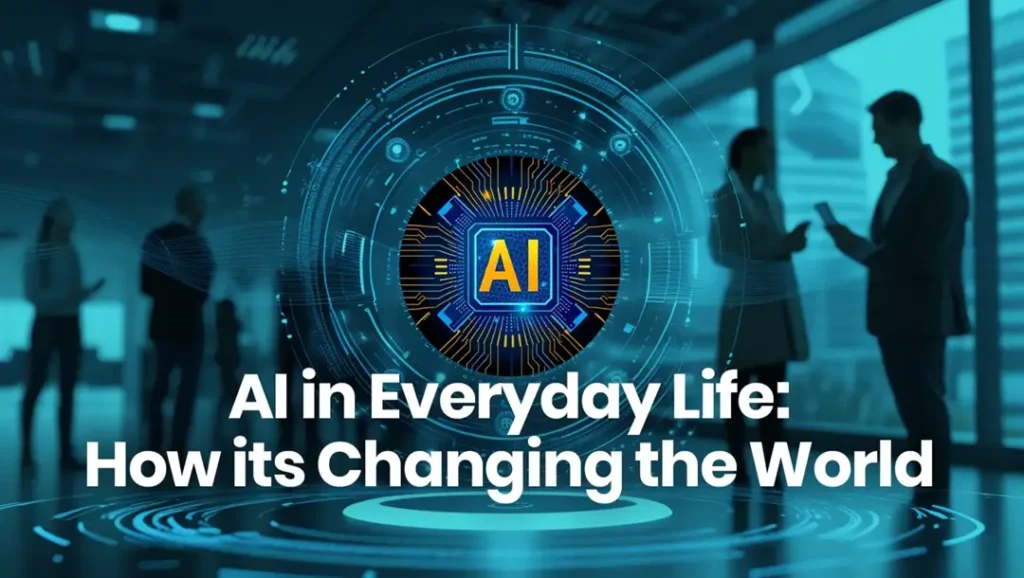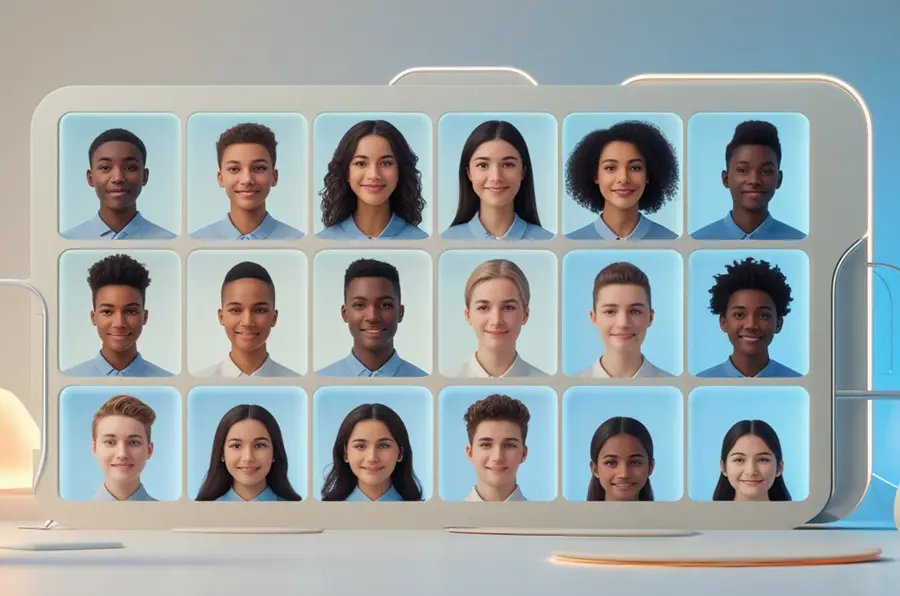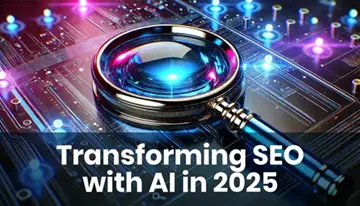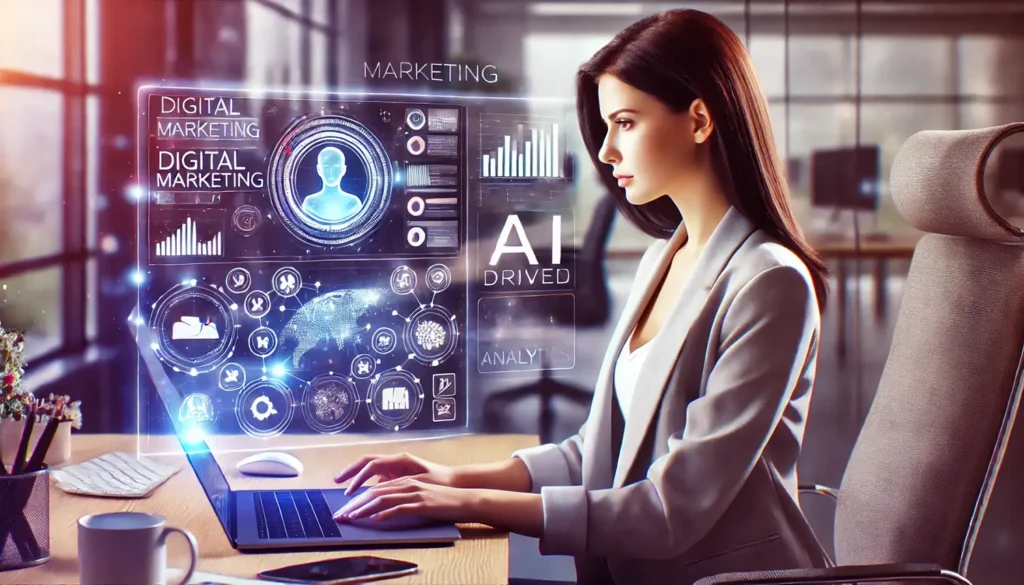
In Part 1, we discussed how AI in everyday life has changed the way we live. It has flawlessly taken space into personal devices, smart homes, and entertainment—making life easier. And made our life more efficient, and personalized.
But impact of AI in everyday life goes far beyond that.
In this section, we’ll see how AI is revolutionizing transportation, reshaping finance. And, how its transforming education.
Let’s get started!
AI in Transportation
Think about a world where traffic jams are rare, accidents are preventable, and you own a self-driven car. I am not talking about a science fiction movie—it’s AI transforming transportation in real life.
Artificial Intelligence in everyday life is reshaping how we travel and commute. For example Google Maps is predicting the fastest route and Tesla is providing self-driving cars. Let’s explore how AI is making this happen.
AI in Navigation: Getting You There Faster
Earlier we use to ask people for directions on road. Those days are long gone. AI-powered navigation knows the best route, even before you start your journey.
AI-Powered Route Optimization
Google Maps and Apple Maps use AI technology, they collect real-time traffic data to analyze. They analyze road closures, and accidents also. AI learns from collected data, it analyses driver’s behavior. When a vehicle slowdown of stops for certain time, it detects traffic jam and suggests a faster route.
Even apps like Ola, Uber, Rapido and Lyft use AI to match drivers with passengers efficiently.
Predictive Traffic Management
AI-powered traffic control systems adjust traffic lights based on road congestion levels. Some cities are already using AI-driven traffic monitoring. This helps them to prevent bottlenecks before even they happen.

Self-driving cars are already running on the roads. Companies like Tesla, Waymo, and BMW are leading in AI-powered autonomous driving cars.
How AI Makes Self-Driving Cars Possible
The technology powered by AI like computer vision allows self-driving cars to detect pedestrians, road signs, and other vehicles. Huge amounts of driving data, processed by Deep learning algorithms helping the car make real-time decisions. Which helps in reducing the risk of accidents.
The Levels of Autonomous Driving
- Level 1-2: AI assists with braking, lane-keeping, and parking (Most cars today).
- Level 3: AI drives but still needs human supervision (Tesla’s Autopilot).
- Level 4-5: Completely autonomous, human driver is not needed (Waymo’s self-driving taxis).
Are Self-Driving Cars Really Safe?
Self-driving cars are designed to reduce human errors. Advanced AI systems keep updating and improving based on real-world driving data. Some cities are already testing AI-powered taxis with zero human drivers.
AI in Ride-Sharing: Smarter, Cheaper, and Efficient
Uber, Ola, Rapido, Lyft, and other ride-sharing services couldn’t exist without AI technology. Every time you book a ride, AI in everyday life is working behind the scenes to make sure you get a fast, cost-effective trip.
How AI Matches You with the Right Driver
AI analyzes location, traffic, and demand to find the nearest available driver. AI-powered pricing algorithms adjust fares based on supply and demand (that’s why app like Uber and Ola charges more during peak hours).
AI-Powered Safety in Ride-Sharing
Suspicious ride activity can be detected by AI. It helps in preventing the fraud and scams to happen. AI-powered facial recognition is getting used to ensure that the driver matches their profile.
AI in Public Transport: Commute Smarter
Public transport isn’t lagging behind. AI in everyday life is helping trains, buses, and even airlines run more efficiently.
AI in Smart Public Transit Systems
Buses and trains scheduling can be done using AI, by analyzing real-time passenger availability. Some AI-based train systems (like in Japan) adjust speed dynamically to avoid delays. AI predicts which routes need more buses and which can be reduced to save fuel and time.
AI in Aviation: Smarter, Safer Flights
Fuel consumption can be reduced by optimizing flight routes by Artificial Intelligence technology. AI-powered predictive tech prevents flight delays by detecting engine issues before they happen. Some airlines use AI in everyday life chatbots for booking, check-ins, and customer service.
The Future of AI in Transportation: Hyperloop trains will revolutionize the high-speed travel. AI in everyday life will further reduce traffic congestion, making daily commuting smoother than ever.
AI in Finance
To be honest—managing finances is a headache. Balancing accounts, tracking expenses, preventing fraud, and making smart investments? That’s a lot!
Thank to AI is revolutionizing the finance world. From detecting fraud before it happens to automating investments, AI is making financial decisions faster, smarter, and more secure.
AI in Fraud Detection: Preventing Scams
To stop fraud we must stay ahead of fraudsters, AI in everyday life is way ahead of them. Banks use AI-powered fraud detection to catch suspicious transactions in real time.
AI Detects Unusual Spending Patterns
If you always shop in New Delhi and suddenly your card is used in New York, AI immediately flags the transaction. AI detects weird spending spikes, like if your card is suddenly used for multiple big purchases in a row. Banks immediately sent alerts to the card holder.
AI-Powered Behavioral Analysis
Through collected data AI learn and analyze how you spend money.
If someone tries to withdraw cash from an unusual location, AI blocks the transaction. Some AI systems even track typing speed and mouse movements to detect bots or hackers.
AI in Investing: Smart Trading, Less Risk
Stock markets are fast, unpredictable, and risky. AI-powered investing tools analyze trends, predict movements, and make smarter trading decisions.
AI-Powered Robo-Advisors: Investing Without Human Emotion
Robo-advisors like Wealthfront, Betterment, and M1 Finance use AI to invest your money automatically. These apps study market trends, analyze risk, and suggest investments based on real-time data collected.
AI removes human emotions like fear and greed, making investments smarter and less impulsive.
AI-Powered Stock Market Predictions
AI analyzes millions of financial reports, news articles, and stock trends to predict market movements. Big investors and fund managers use AI to identify trending stocks.
Some AI models even predict economic downturns months in advance.
AI in High-Frequency Trading: Speed is Everything
AI-powered trading algorithms execute trades in microseconds, far faster than humans ever could.
Large financial institutions use AI to buy and sell stocks at lightning speed, maximizing profits. Artificial Intelligence based apps detect price fluctuations and executes trades immediately with wasting any second.
AI in Banking: Smart Banking Services
Banking is more digital than ever, and AI is at the core of this transformation.
AI-Powered Chatbots: No More Waiting on Hold
Banks use AI-powered chatbots (like Erica from Bank of America or Eva from HDFC Bank) to answer customer questions instantly. Instead of calling customer service, users get answers through AI chatbots—whether it’s checking balances, resetting passwords, or tracking transactions.
AI in Loan Approvals: Faster, Fairer Decisions
AI analyzes credit history, income, and spending patterns to determine loan eligibility in minutes. Earlier banks often unknowingly reject people, but now AI in everyday life can evaluates thousands of factors in seconds. This made banks lending decisions fairer and data-driven.
The Future of AI in Finance: AI-powered financial advisors that create fully customized investment strategies. Voice-controlled banking, where AI assistants handle transactions via voice commands. AI detecting economic crashes before they happen, helping governments and investors prepare in advance.
AI in Education
Education is no longer just about textbooks and blackboards. Artificial Intelligence is revolutionizing how we learn and study. Education is more accessible and interactive now.
AI is making education smarter and more efficient for both students and educators. AI-powered tutors are teaching in real-time and smart grading systems are saving teachers hours of work.
AI in Personalized Learning: Teaching That Adapts to You
Not all students learn the same way. Some learn faster, while some take time, AI is bridging this gap.
AI-Powered Adaptive Learning Platforms
AI-based platforms like Khan Academy, Coursera, and Duolingo analyze student performance and adjust the difficulty level accordingly.
If a student struggles with a concept, AI slows down and offers extra explanations. If they excel, AI challenges them with harder questions. They make sure every student learns at their own pace.
AI Tutors: 24/7 Assistance for Students
AI-powered tutors like Socratic by Google and IBM Watson Tutor help students solve complex problems step by step. These AI tutors don’t just give answers—they explain concepts in a way students can understand.
Unlike human tutors, AI is available anytime, helping students study whenever they need it.

Online learning skyrocketed during the pandemic, and AI made it more interactive and effective.
AI in Virtual Classrooms: Making Online Learning More Engaging
Online learning skyrocketed during the pandemic, and AI made it more interactive and effective.
AI-Powered Virtual Classrooms
Platforms like Zoom, Google Classroom, and Microsoft Teams use AI to enhance online learning experiences. AI can track student engagement, ensuring students stay focused during virtual lessons.
AI-Powered Chatbots for Student Support
Chatbots are getting used to assist students by many universities. They help students in academic queries, course selections, and deadlines. These AI in everyday life based chatbots respond instantly, and help.
AI in Special Education: Making Learning Inclusive
Artificial Intelligence is helping students with disabilities by making education more accessible and personalized.
AI for Visually Impaired Students
AI-powered screen readers convert text into speech, allowing visually impaired students to access online materials easily. Seeing AI by Microsoft, helping students navigate classrooms independently.
AI for Students with Learning Disabilities
Students with dyslexia or writing difficulties get help from AI apps like Grammarly and Speech-to-Text. Each student gets personalised study material, making learning more inclusive.
The Future of AI in Education: AI-powered hologram teachers could provide immersive learning experiences. Brain-computer interfaces (BCIs) may allow students to learn directly through neural stimulation. AI will continue to make learning more personalized, accessible, and engaging.
AI in Shopping and E-Commerce:
Shopping has changed dramatically over the past decade. Earlier to buy something we have to walk into a store, pick what you needed and stand in a long billing counter queue. Now, AI has made shopping faster, easier, and way more personalized—whether you’re online or in a physical store.
AI in Personalized Shopping: Knowing What You Want
As you browse an online store, the familiar items presented on the screen. It feels like the app knew what you wanted. That’s AI analyzing your interests and purchasing behaviour and shopping habits.
AI-Powered Product Recommendations
Amazon, Flipkart, and eBay use AI to analyze what you’ve searched, what you’ve bought, and what similar shoppers are interested in.
The more you shop, the smarter AI gets—suggesting items you’re likely to buy before you even search for them. Have you ever clicked on one product, and suddenly you see similar products everywhere? That’s AI tracking your interest and refining suggestions.
AI-Powered Dynamic Pricing
AI adjusts product prices in real-time based on demand, competition, and your browsing behavior. Example: If you check the price of a product multiple times, AI may increase the price slightly knowing you’re interested.
Aggregators sites for airlines and hotels uses AI to offer discounts—so if you change your mood. The AI in everyday life based app might drop the price to push you to buy.

AI-Powered Chatbots for Shopping Help
Many e-commerce stores now have AI chatbots that answer customer questions instantly. Some AI enabled chatbots suggest sizes based on purchase history so you don’t make mistake.
AI-Powered Virtual Try-Ons
Brands like Sephora, Warby Parker, and Lenskart use AI-driven augmented reality (AR). They let you “try on” makeup, glasses, and clothes virtually before buying. AI scans your face and body type to recommend styles that suit you best.
Many brands use AI-powered shoe sizing tools to help their customer for a perfect fit.
AI in Inventory and Supply Chain Management: Never Running Out of Stock
Popular products rarely run out of stock online, that’s because AI is working behind the scenes to predict demand.
AI-Powered Demand Forecasting: AI keeps track of shopping trends, seasonal demand, and customer behavior. It helps to predict which products will be in high demand.
Artificial Intelligence in Warehouse Automation: In Amazon, Flipkart and Walmart warehouses AI-enabled robots are used to organize, pick, and pack products faster. AI analyzes delivery routes, weather conditions, and traffic patterns to ensure on-time deliveries.
AI in Customer Service
Nobody likes waiting on hold for customer service. AI-powered chatbots and virtual assistants now handle most customer queries instantly.
AI Chatbots for Instant Support
Many brands are using AI chatbots to answer FAQs, and track the orders. These chatbots learn from past interactions to improve responses over time.
In case chatbot is unable to resolve an issue, it transfers the customer to a human service agent.
AI-Powered Voice Assistants in Shopping
Just ask Alexa, Siri, and Google Assistant, they will place orders for you just by ordering them. Example: You say, “Alexa, order more toothpaste,” and AI knows exactly which brand you prefer from past purchases.
The Future of AI in Shopping: A personal fashion assistant will suggest you, outfits, according to occasion, your looks and body shape. Amazon Go is using a fully automated checkout system. Here customers are not needed to wait in line, they can checkout directly.
FAQs for AI in Everyday Life
1. How does AI improve transportation in daily life?
Artificial Intelligence is making transportation smarter, safer, and more efficient.
AI-powered navigation apps (Google Maps, Waze) predict traffic and suggesting faster routes. Self-driving cars are reducing accidents. AI in ride-sharing (Uber, Ola, Lyft) optimizing driver-passenger matching and pricing. Use of AI in public transport is improving schedules for smoother commutes.
2. Are self-driving cars safe?
AI-enabled sensors, cameras, and deep learning help driver-less cars to detect obstacles. Research says human-related accidents can be reduced using AI technology. But road conditions and ethical dilemmas remain challenge.
Though many cities are testing AI-powered taxis.
3. How does AI prevent fraud in banking and finance?
AI monitors transactions in real-time it helps banks to detect suspicious activity. It uses behavioral analysis and flag unusual spending patterns. It prevents fraud risks before they happen, Bank sent alert messages to users immediately.
This makes banking safer and more secure for consumers.
4. How does AI help students in education?
AI-powered education tools provide:
- Personalized learning schedule and outline based on student capability.
- 24/7 AI tutors (like Socratic by Google) that explain concepts interactively.
- Grading system help in saving teachers valuable time.
This makes learning more adaptive and accessible for students worldwide.
5. Can AI replace human teachers?
No, but AI can enhance education.
AI personalizes lessons, track progress, and automate grading. Teachers remain irreplaceable for emotional intelligence, creativity, and human interaction. The best approach is a hybrid model where AI supports teachers, not replaces them.
In the final part of this series, we’ll dive into how AI is transforming e-commerce, public services, and ethical concerns. Don’t miss it!



Pingback: AI in Real Life: Impacting into our Daily Life - Social Gyani